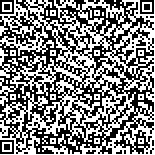下载中心
优秀审稿专家
优秀论文
相关链接
摘要

回顾了国际气象卫星和中国风云气象卫星的发展,综述了气象卫星在图像解译、定量产品应用和数据同化方面的成就以及辐射校正技术的进步。围绕大气科学,特别是数值天气预报对天基观测的需求,展望了未来气象卫星的技术发展方向。
In 1960, the first meteorological satellite was launched into space, demonstrating the feasibility of observing global weather systems with space technology. Today, the capabilities of meteorological satellites and remote sensing instruments have developed enormously, to the point where geostationary meteorological satellites can complete local observations every minute and polar orbiting meteorological satellites can observe the Earth's atmosphere not only in the ultraviolet, visible, infrared, but also in microwave spectra. With the development of space technology in the past half century, meteorologists have experienced the increasing demands for the sophisticated use of meteorological satellite data. With the framework of World Meteorological Organization, the meteorological satellite constellation operated by many countries and government agencies plays an essential role in weather forecast, climate analysis, environment and disaster monitoring, etc. This paper first provides an overview of the history of meteorological satellites, with a focus on American, European, and Chinese polarorbiting and geostationary meteorological satellites, including the NOAA, GOSE, METOP, Meteosat, Fengyun, etc. This overview illustrate show meteorological satellite observation has developed from photographic to digital, from optical to microwave, and from imaging to sounding. The second part of this paper reviews the progress of satellite data applications by introducing image interpretation, quantitative data analysis, and data assimilation, as well as the scientists who made significant contributions to the methodology of data application, including Roger B. Weldon, Vernon F. Dvorak, and James Purdom. It explain show the application of satellite data has reached its maturity along with the development of space technology and how it has been integrated fully into many areas of atmospheric sciences, especially in weather forecasting. With regard to the importance of calibration for the usefulness of satellite data, the national calibration programs launched by America, France, and China are also presented. The future holds great challenges in the development of a global atmospheric observation system. Considering that some studies have published satellite development plans, we conclude the paper by highlighting geostationary microwave observation, atmospheric dynamic observation, and radiometric calibration reference satellite techniques that are currently not listed in the plans approved by meteorological satellite operators. The geostationary microwave sounder can provide high-frequency thermal structure information of ever-moving cloud systems, which is crucial to now casting. Atmosphere dynamic observation can solve the middle-scale forecast problem caused by the lack of an atmospheric wind profile, and radiometric calibration satellites are designed to establish a space-based radiometric reference for the calibration of all remote sensing satellites. These three components could become milestones in the development of meteorological satellites in the future.

